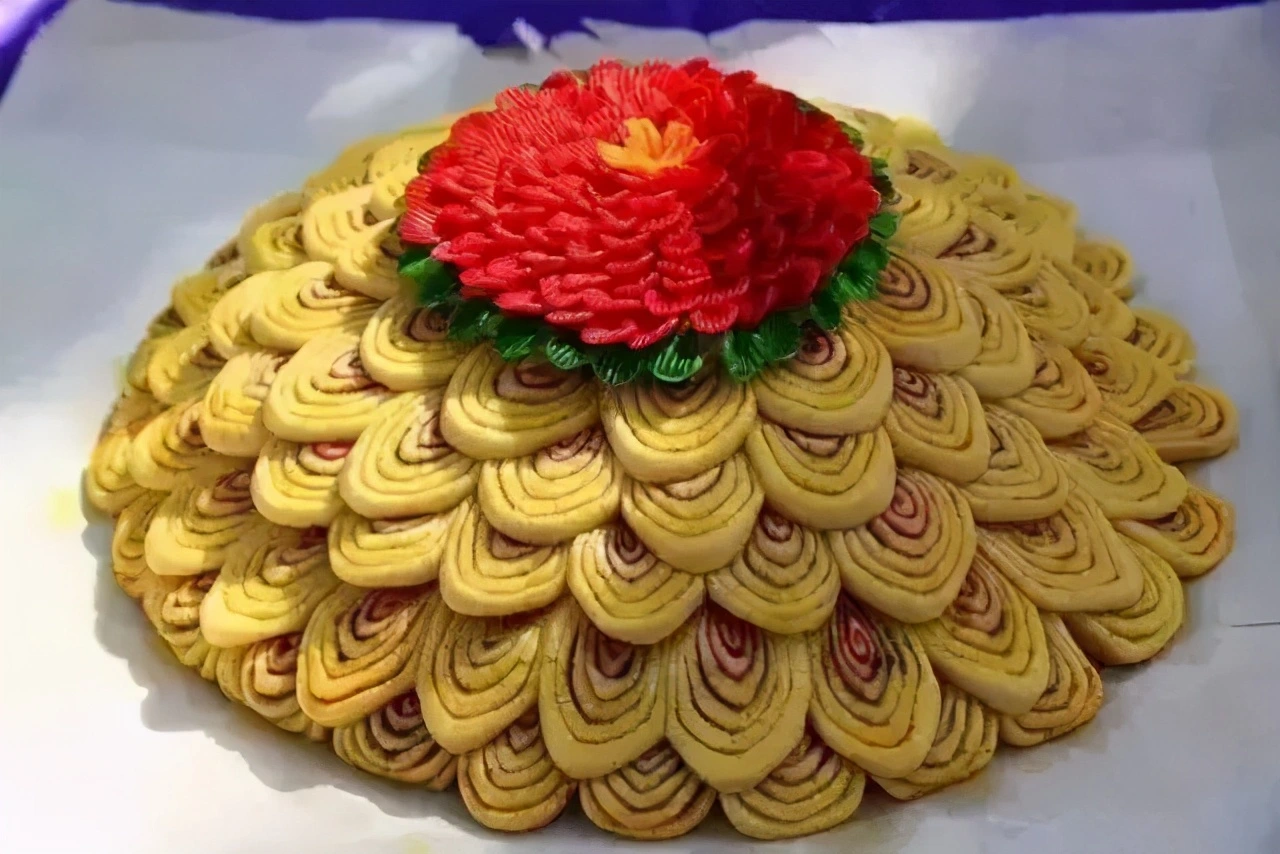Liangzhou Mooncakes의 예술: Wuwei의 요리 유산, 간수
요리 전문가로서, 나는 Liangzhou Mooncakes의 복잡한 세계를 탐구하게되어 기쁩니다., a delicacy that hails from the vibrant city of Wuwei in Gansu Province, 중국. These mooncakes are not just pastries; they are a testament to the region’s rich cultural heritage and culinary mastery.
**Origin and Cultural Background**
The Liangzhou Mooncake has its roots deeply embedded in the history of Gansu Province. Known for its unique flavor profile and intricate designs, this mooncake is a symbol of the region’s culinary tradition. It has been crafted for generations during the Mid-Autumn Festival, a time when families gather to celebrate and appreciate the full moon. The Liangzhou Mooncake is more than a dessert; it’s a piece of art that has been passed down through generations, reflecting the values of community, family, and cultural continuity.
**Ingredients and Method**
The Liangzhou Mooncake is crafted with a select set of ingredients that contribute to its distinct taste and aroma. The dough is traditionally made from flour, 물, 그리고 설탕의 터치, while the filling is a blend of sweet red bean paste and locally sourced nuts. What sets these mooncakes apart is the use of turmeric, known for its vibrant yellow color and earthy flavor, and the fragrant black beans that add a unique depth to the filling. The process involves meticulous handcrafting, where each mooncake is individually shaped and filled before being baked to perfection.
**Texture and Taste**
The texture of a Liangzhou Mooncake is a delightful balance of a soft, slightly crisp outer crust and a tender, sweet filling. The turmeric-infused dough has a subtle earthiness that complements the sweetness of the filling, while the black beans add a nutty richness. Each bite is a harmonious blend of flavors that dance on the palate, evoking a sense of warmth and celebration.
**Aesthetics and Appearance**
시각적, the Liangzhou Mooncake is a feast for the eyes. The pastries are often adorned with intricate designs, a tradition that involves the use of molds to create patterns that are pressed into the dough before baking. These designs are not just decorative; they carry symbolic meanings, often representing prosperity, longevity, and happiness. The vibrant yellow from the turmeric and the contrast with the black bean filling create a striking appearance that is as impressive as it is inviting.
**Representative Dishes and Culinary Uses**
While the Liangzhou Mooncake is traditionally enjoyed on its own, it can also be used as an ingredient in various desserts. 예를 들어, it can be served warm with a scoop of vanilla ice cream, or it can be incorporated into a dessert platter with other mooncake varieties. Its unique flavor profile also makes it a versatile component in creative culinary applications, such as in mooncake-inspired pastries or even as a filling for crepes.
**Culinary Characteristics**
The Liangzhou Mooncake is a shining example of culinary craftsmanship and cultural preservation. It is a非物质文化遗产 (intangible cultural heritage), showcasing the traditional skills and artistry that have been passed down through generations. The use of turmeric and black beans, along with the intricate designs, make it a unique culinary experience that is both a tribute to the past and a celebration of the present.
결론적으로, the Liangzhou Mooncake from Wuwei is more than just a food item; it is a culinary journey through the rich tapestry of Gansu’s history and culture. Each mooncake is a story, waiting to be savored and shared, and a reminder of the enduring traditions that continue to shape the culinary landscape of China.
